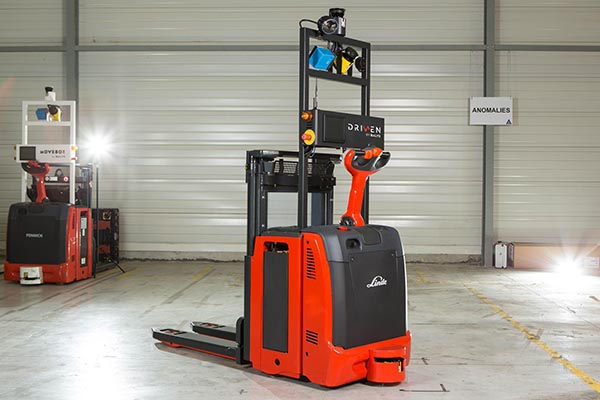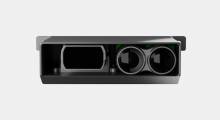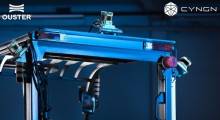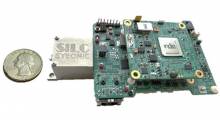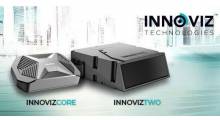BALYO SA, which has developed autonomous navigation systems for forklifts, today said it has signed a strategic customer agreement with Ouster Inc. to deploy Ouster's 3D digital lidar sensors in its robotic lift trucks. As part of the multi-year agreement, Ouster will supply its OS0 sensor to BALYO, adding functionality to BALYO's vehicles.
“BALYO chose to work with Ouster due to benefits from the wide field of view and high resolution of its OS0 sensor, as well as a high level of reliability that justified our investment in increased levels of autonomy that will bring additional value to our innovative solutions and our clients,” stated Pascal Rialland, CEO of BALYO.
Ouster lidar offers sensor upgrade
Millions of forklifts are currently deployed around the world. Still, less than 1% of pallets are moved by intelligent machines today, leaving open a large market opportunity for autonomous forklifts to drive increased safety and efficiency, said Ouster.
The San Francisco-based company invented its digital lidar in 2015 and makes high-resolution digital lidar sensors used in the industrial automation, smart infrastructure, robotics, and automotive industries. Ouster claimed that its sensors are reliable, compact, affordable, and highly customizable, with hundreds of customers incorporating them in current products or those in development for commercial release.
Ouster said the upgrade from legacy 2D lidar sensors to its 3D digital lidar will add new functionality, including 3D localization in complex surroundings, 3D software to create a safety “bubble” around the robotic forklifts, navigation on routes and circuits, energy efficiency, and remote monitoring.
BALYO plans to improve safety, efficiency
Ivry-sur-Seine, France-based BALYO said it believes that moving pallets in distribution centers and factories should be left to fully autonomous robots, freeing humans for more enriching jobs. The company's Driven by Balyo technology includes autonomous guidance systems to enable standard lift trucks to autonomously navigate inside buildings without the need for additional infrastructure.
The company has subsidiaries in Boston and Singapore and serves customers in the Americas, Europe, and the Asia-Pacific region. BALYO has also entered into partnerships with KION and Hyster-Yale Group and offers warehousing robots for palletizing, stacking, reach, and very narrow aisle (VNA) applications. It reported €21.7 million ($26.5 million U.S.) in revenue in 2020.
By switching to Ouster’s 3D digital lidar, BALYO plans to further improve its autonomous forklifts so they can safely and efficiently operate anytime, anywhere with minimal human oversight.
“BALYO epitomizes a trend we see across our customer base, in which a company that started using 2D lidar for basic automation upgrades to 3D digital lidar to add more sophisticated automation features, providing a powerful return on investment,” said Angus Pacala, CEO of Ouster. “We are excited to work with them as they continue to deploy more robots, which will improve the efficiency and accuracy of routine operations while working side by side with humans.”
Article topics
Email Sign Up

